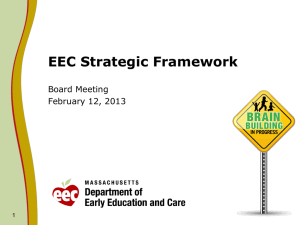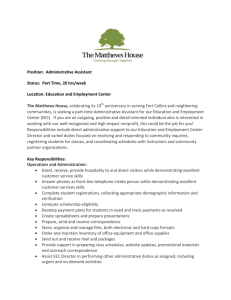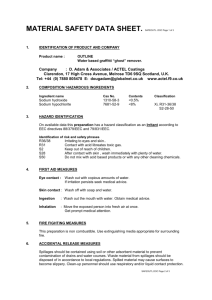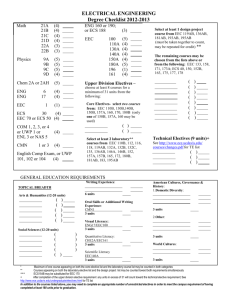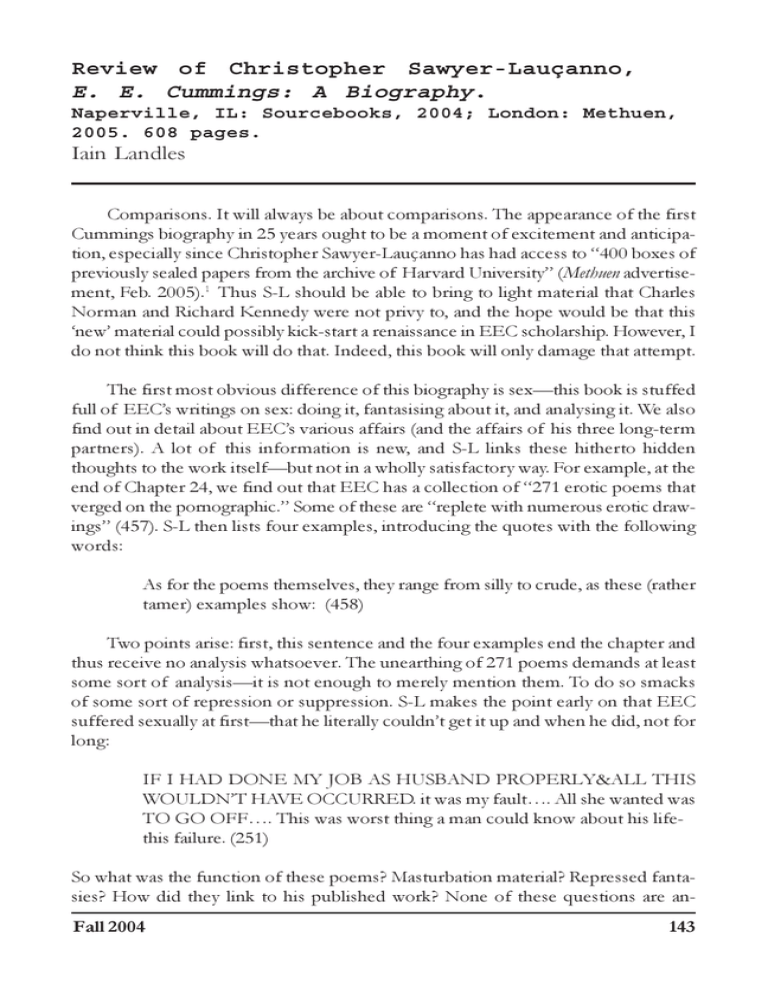
Review of Christopher Sawyer-Lauçanno,
E. E. Cummings: A Biography.
Naperville, IL: Sourcebooks, 2004; London: Methuen,
2005. 608 pages.
Iain Landles
Comparisons. It will always be about comparisons. The appearance of the first
Cummings biography in 25 years ought to be a moment of excitement and anticipation, especially since Christopher Sawyer-Lauçanno has had access to “400 boxes of
previously sealed papers from the archive of Harvard University” (Methuen advertisement, Feb. 2005).1 Thus S-L should be able to bring to light material that Charles
Norman and Richard Kennedy were not privy to, and the hope would be that this
‘new’ material could possibly kick-start a renaissance in EEC scholarship. However, I
do not think this book will do that. Indeed, this book will only damage that attempt.
The first most obvious difference of this biography is sex—this book is stuffed
full of EEC’s writings on sex: doing it, fantasising about it, and analysing it. We also
find out in detail about EEC’s various affairs (and the affairs of his three long-term
partners). A lot of this information is new, and S-L links these hitherto hidden
thoughts to the work itself—but not in a wholly satisfactory way. For example, at the
end of Chapter 24, we find out that EEC has a collection of “271 erotic poems that
verged on the pornographic.” Some of these are “replete with numerous erotic drawings” (457). S-L then lists four examples, introducing the quotes with the following
words:
As for the poems themselves, they range from silly to crude, as these (rather
tamer) examples show: (458)
Two points arise: first, this sentence and the four examples end the chapter and
thus receive no analysis whatsoever. The unearthing of 271 poems demands at least
some sort of analysis—it is not enough to merely mention them. To do so smacks
of some sort of repression or suppression. S-L makes the point early on that EEC
suffered sexually at first—that he literally couldn’t get it up and when he did, not for
long:
IF I HAD DONE MY JOB AS HUSBAND PROPERLY&ALL THIS
WOULDN’T HAVE OCCURRED. it was my fault…. All she wanted was
TO GO OFF…. This was worst thing a man could know about his lifethis failure. (251)
So what was the function of these poems? Masturbation material? Repressed fantasies? How did they link to his published work? None of these questions are anFall 2004
143
swered; we are left with our own suppositions.2
Secondly, why has S-L effectively censored the sample—why “tamer” examples?
Is he scared of offending us? Surely, if we are to see a “warts and all” biography—
something that is hinted at in the blurb—then we need to see these oddities, if only
to place them in the picture S-L is building.
The whole “sex” material is implicit in Cummings’ poems and plays anyway, and
thus the actual rubber-stamping (that EEC had a sexual life, complete with fantasies)
is undercut from the beginning. Kennedy talks (more interestingly) about how EEC’s
guilt affected his work—especially masturbation. It comes as no surprise to us that a
poet who produced poems such as “may i feel said he” (CP 399) had a secret stash of
sexual material—what is interesting is that EEC composed his own stash of sexually
explicit material.
Sawyer-Lauçanno is guilty of what Norman and Kennedy are also guilty of—the
lack of information about EEC’s life with Marion. Norman’s book is, quite frankly,
awful on the subject, and Kennedy’s skirts around the issue far too delicately. Similarly, S-L refers less and less to EEC’s sexual life as the book goes on—especially with
the link between a lack of sex life and his work.
Sawyer-Lauçanno avoids “touchy” subjects—for example, in dealing with EEC’s
relationship with Nancy, he steadfastly refuses to put into print the simple fact that
EEC fought a custody battle for Nancy simply to “get at” Elaine—otherwise, how
can EEC’s instantaneous dropping of Nancy have ever happened? In other words,
once EEC had another woman (Anne Barton) to fill up his time, he couldn’t have
cared less about his daughter. This is a very important point, since EEC is famous for
his “individualism” (something S-L is at pains to point out). This abandoning of his
child is the flip side of that individualism—the rejection of sharing. EEC comes to
realise late in his life that transcendence can also be reached through sharing, not only
art. Yet here is evidence that at times EEC couldn’t do that—that art was his only
interest, and his dedication to art shows him to be a selfish, non-social being. This is
interesting territory that S-L never explores.
Sawyer-Lauçanno’s analysis of the work is never really insightful and adds nothing to the canon of pre-existing critical work. Indeed, his analyses of certain works are
superficial to say the least. He hardly prints a poem in full—a mistake since “new”
readers may make the assumption that what is on the page is actually the complete
poem. S-L’s analysis of Him is inferior to Kennedy’s as is his dissection of EEC’s
articles written for various magazines.
What I find really horrifying, though, are the numerous mistakes and borrowings from Kennedy. This is just sloppy research and harms the “Cummings cause.”
144
Spring
Here are a couple of examples of sloppy or lazy mistakes:
1. The poem “oil tel duh woil doi sez” (CP 312) is not “about card players”
(335) as S-L claims—rather, it’s about an American WWI veteran bemoaning his fate in a French bar (cf. Chott). Though S-L shows that he has
consulted Spring occasionally (see his Bibliography), he shows here that he
isn’t particularly up to date with current criticism.
2. A small, but telling example: when S-L quotes “anyone lived in a pretty
how town” (CP 515), he transcribes line 26 as “(and noone stopped to kiss his
face)” (436) instead of the correct (and much more suggestive and telling)
“(and noone stooped to kiss his face)” (italics added).
The list of errata in this biography is such that it begins to affect the reading of the
book. (For more examples, see the following review.) Now we could put this lapse
down to the publishers, but I suspect that S-L hasn’t proof-read the book closely at
all. Either way, the more one reads, the more that the book begins to seem like a first
draft undergraduate dissertation handed in at the last minute. It does not come across
as serious academic research.
Perhaps the most unpleasant charge against the book has been that of plagiarism. In an article in Harper‘s Magazine, Wyatt Mason makes a strong case that S-L’s
biography “is jammed with instances of wholesale borrowing—not only of research
but of storytelling and language” (99-100). In particular, Mason provides detailed
examples of alleged plagiarism of passages from Kennedy’s biography. Furthermore,
Washington Post critic Jonathan Yardley noted that the biography relied heavily on
Mr. Kennedy’s work and might have benefited from a more thorough section of
research notes.
Naturally, S-L defended himself—in Mason’s article, he is quoted as saying that
he “obviously missed some places that should have been documented . . . . But I
didn’t do it consciously” (100). In a March, 2005 New York Times article on the controversy, S-L responded to the charge of plagiarism by saying that it was “inaccurate and
unfair.” Furthermore, he asserted that “Mr. Mason’s selected passages indicate—at
most—that I failed to cite properly Kennedy’s contributions in a few of my 1,406
notes. I have corrected these oversights for the paperback edition of the book that
Sourcebooks will publish in the fall. . . . This is an oversight, not plagiarism.”3
An oversight? Some would call this blindness. The constant drip-drip of errors,
misinformation, “oversights,” and down-right mistakes provide a sour experience
for the reader. The claim on the dusk-jacket that the book “deserves first place on any
short list of Cummings’s scholarship” is nonsense. This is so badly written that I for
one will actively encourage students to read it as a poor example of academic research.
Fall 2004
145
Overall, this book must have been aimed at the general reader—the one who
hasn’t come across EEC in any detailed way. This is a pity, since what they will take
away with them is the book’s inconsistencies and misinformation. What galls me
personally is that here in the UK this book was serialised in The Guardian—just as
news broke of the plagiarism charge. What effect this has had on Cummings’ scholarship over here isn’t worth thinking about. It is certainly not scholars who will feel a
sense of frustration and disappointment—the scholar’s first book will still be
Kennedy‘s. One senses that S-L loves EEC but this rather flattering portrait is flawed
not just academically, but also in intent—it simply isn’t brave or good enough.
—Fareham College, UK
Iain.Landles@fareham.ac.uk
Notes
1 The number 400 seems excessive. Perhaps the blurb-writers meant “400 folders of
material”? [Editor’s note.]
2 For different interpretations of this passage and of the passage later in this review
on Cummings’ custody battle for his daughter Nancy, see the following review.
[Editor’s note.]
3 The paperback edition of Sawyer-Lauçanno’s biography has yet to appear. [Editor’s
note.]
Works Cited
Chott, Larry. “The Sight of Sound: Cummings’ ‘oil tel duh woil doi sez’.” Spring 6
(1997): 45-48. See http://www.gvsu.edu/english/cummings/oiltel6.htm
Cummings, E. E. Complete Poems, 1904-1962. Ed George J. Firmage. New York:
Liveright, 1994.
Mason, Wyatt. “Make It Newish: E. E. Cummings, Plagiarism, and the Perils of
Originality.” Rev. of E. E. Cummings: A Biography, by Christopher Sawyer-Lauçanno.
Harper’s Magazine May 2005: 92-100, 102.
Wyatt, Edward. “E. E. Cummings Scholar Is Accused of Plagiarism.” New York Times
16 April 2005, late ed.: B7.
Yardley, Jonathan. “E.E. CUMMINGS: A Biography.” Rev. of E. E. Cummings: A
Biography, by Christopher Sawyer-Lauçanno. Washington Post 17 Oct. 2004: BW02.
<http://www.washingtonpost.com/wp-dyn/articles/A34132-2004Oct
14.html>.
146
Spring


